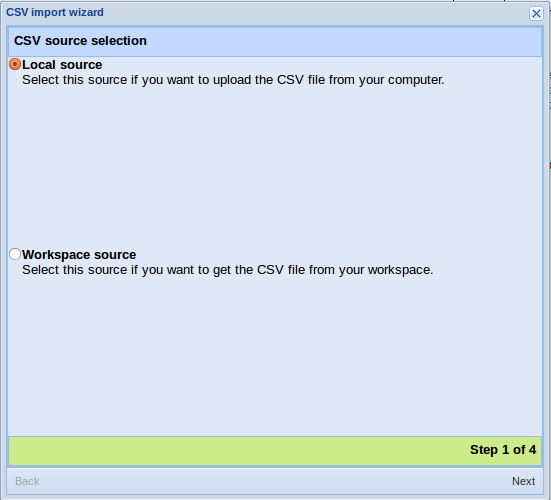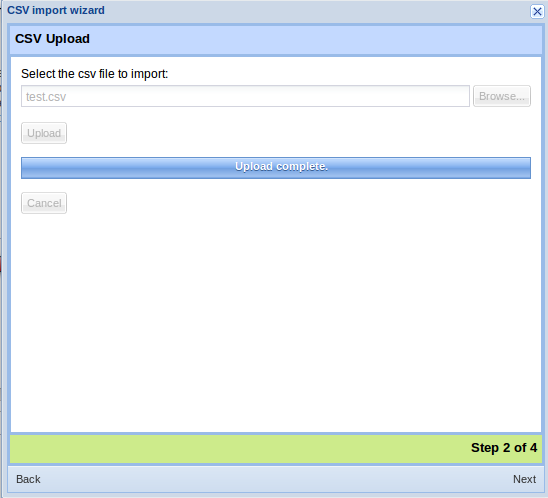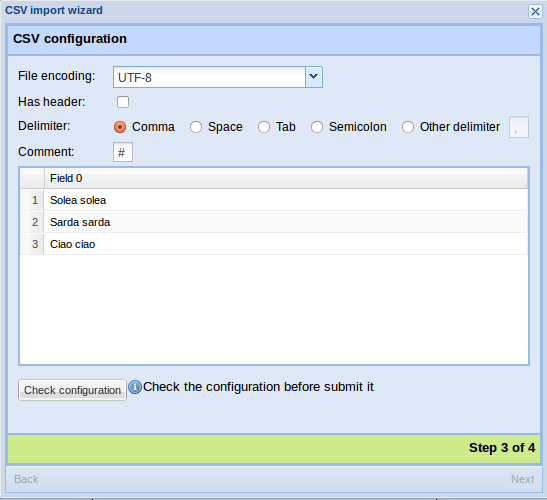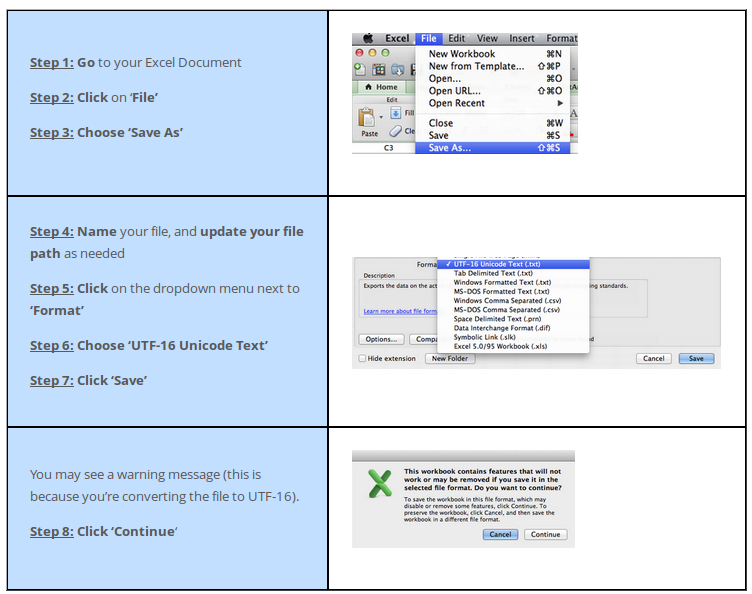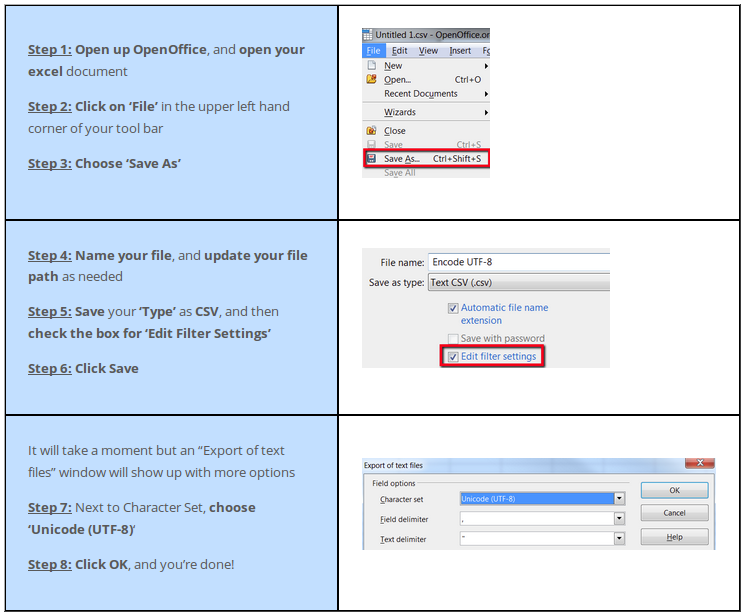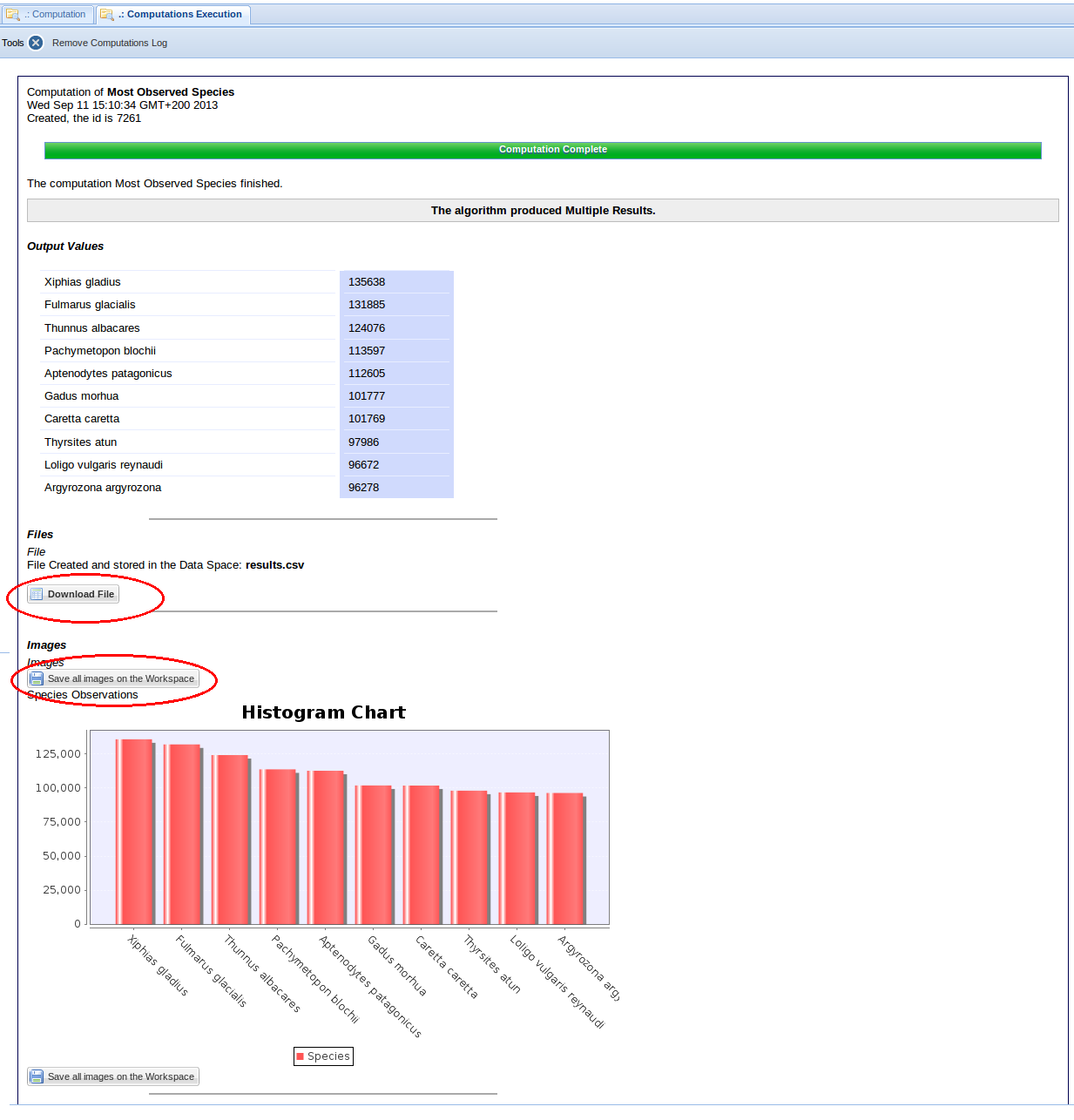Difference between revisions of "Statistical Manager Tutorial"
| Line 8: | Line 8: | ||
=Upload custom file= | =Upload custom file= | ||
| − | In the | + | In the ''Access to the Data Space'' section click on the ''Importer'' tab. |
| − | In the ''Data Set Importer'' form user type | + | In the ''Data Set Importer'' form, a user can type the name he\she wants to assign to the file that will be imported. |
| + | |||
| + | Select the correct template for the file and click on ''Open CSV Importer Wizard''. | ||
[[File:FormImport.png|800px]] | [[File:FormImport.png|800px]] | ||
Revision as of 10:32, 19 September 2013
Contents
Statistical Manager
This is a cross-usage service that provides users and services with tools for performing data mining operations. Specifically, it offers a unique access to perform data mining and statistical operations on heterogeneous data, which may reside either on the client side, in the form of comma-separated values files, or be remotely hosted, possibly in a database. The SM service is able to take inputs and execute the operation requested by a client by invoking the most suited computational facility from a set of available computational resources. Executions can run either on multi-core machines or on different computational platforms, such as D4Science and other different private and commercial Cloud providers.
The SM Service is a container of algorithms that are implemented as plug-ins based on the Dependency Injection programming pattern. These reside on SM and can be invoked by infrastructural or external clients according to a public Web Services Description Language interface. The requests are managed asynchronously, and the client can monitor the status of the computation at any time.
Upload custom file
In the Access to the Data Space section click on the Importer tab. In the Data Set Importer form, a user can type the name he\she wants to assign to the file that will be imported.
Select the correct template for the file and click on Open CSV Importer Wizard.
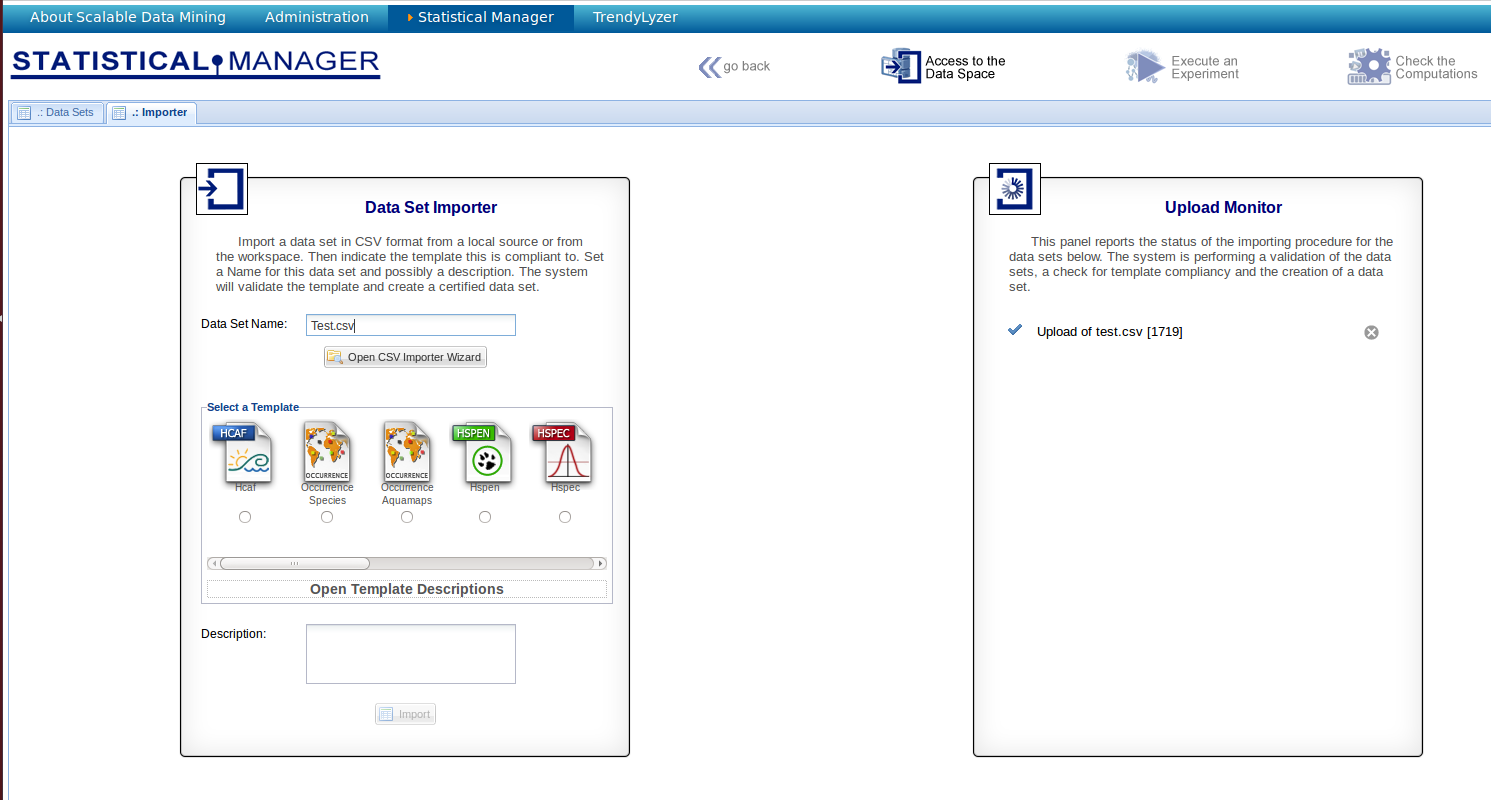
The csv import wizard will be shown. User has two possibilities to import files:
- import files from local source;
- import file from workspace;
According this choise, user select right flag and click Next.
Import file from local source
- Click on Browse and select file in local source;
- Click on Upload and click Next;
- If the first row is the header ros of the columns, check the flag Has header.
- Select the delimeter of columns;
- Click on Check configuration;
- Clikc Next;
- Click Finish when import is completed.
Import file from workspace
- Click on Browse and select file in the windows pop up that shows user workspace files
- see steps [2-7] in the previous section.
Saving files directly as UTF-8
Most text editors these days can handle UTF-8, although you might have to tell them explicitly to do this when loading and saving files. (The notable exception to this is probably Notepad on Windows.) You may save a file using Notepad (sometimes called "Editor") as UTF-8 .
- Open Notepad
- File - Save as -> there you see 3 fields set the last one called "encoding" to: UTF-8
You may save a file using also Excel or Open Office (see next figures)
Execute Statistical Manager Exeriment and Collect Results
In the section Execute an Experiments" user find a list of algorithms grouped by category.
Click on the cathegory in wchich chosen algorithm is, A list of algorithms will apear.
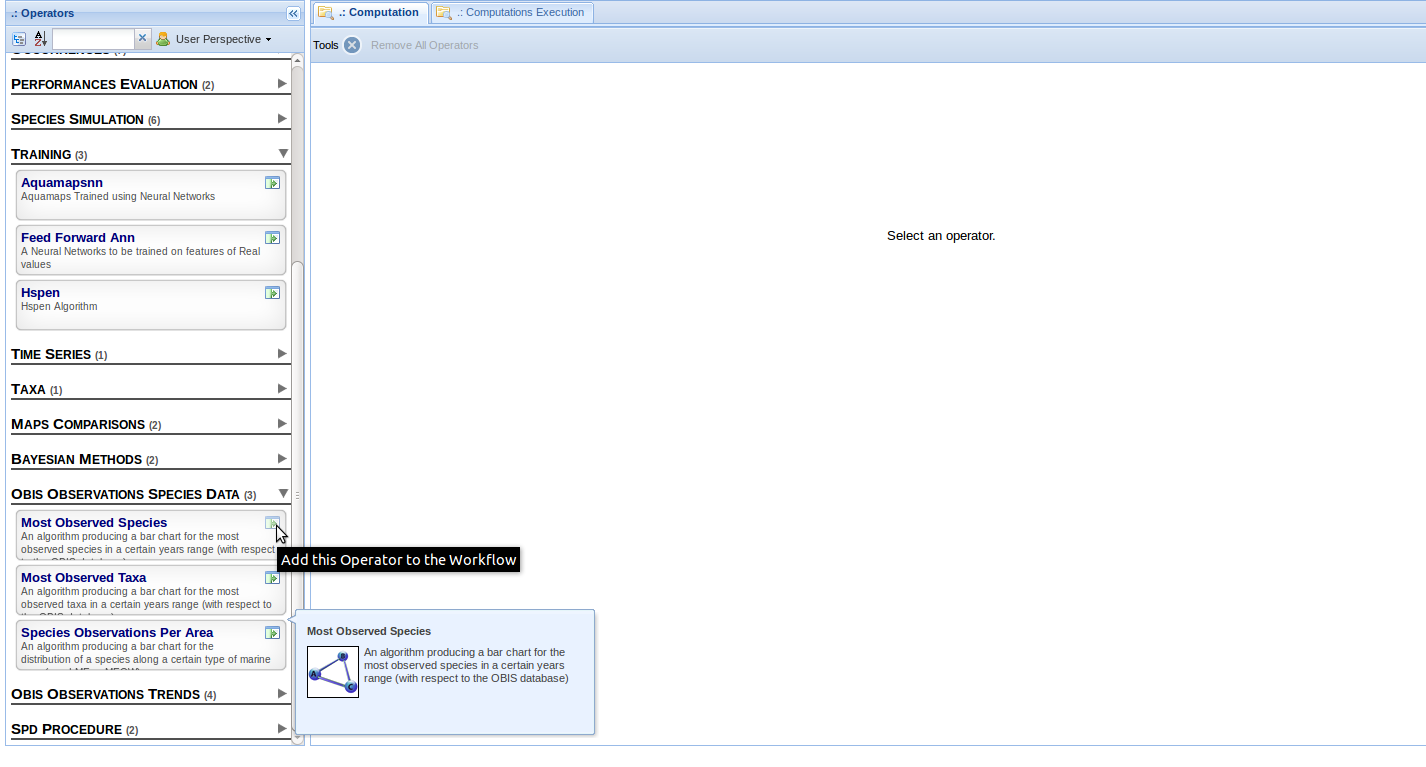
The user can retrive parameters of the chosen algorithm, clicking on the arrow on top of the algorihtm description. The user fill in the parameters and click on Start computation. When the computation is completed, the user can access the results in different ways according to the algorithms features. The result can be retrieved as follows:
- interface visualization;
- download results files clicking on "Download file";
- save results in the workspace clicking "Save in the workspace";
